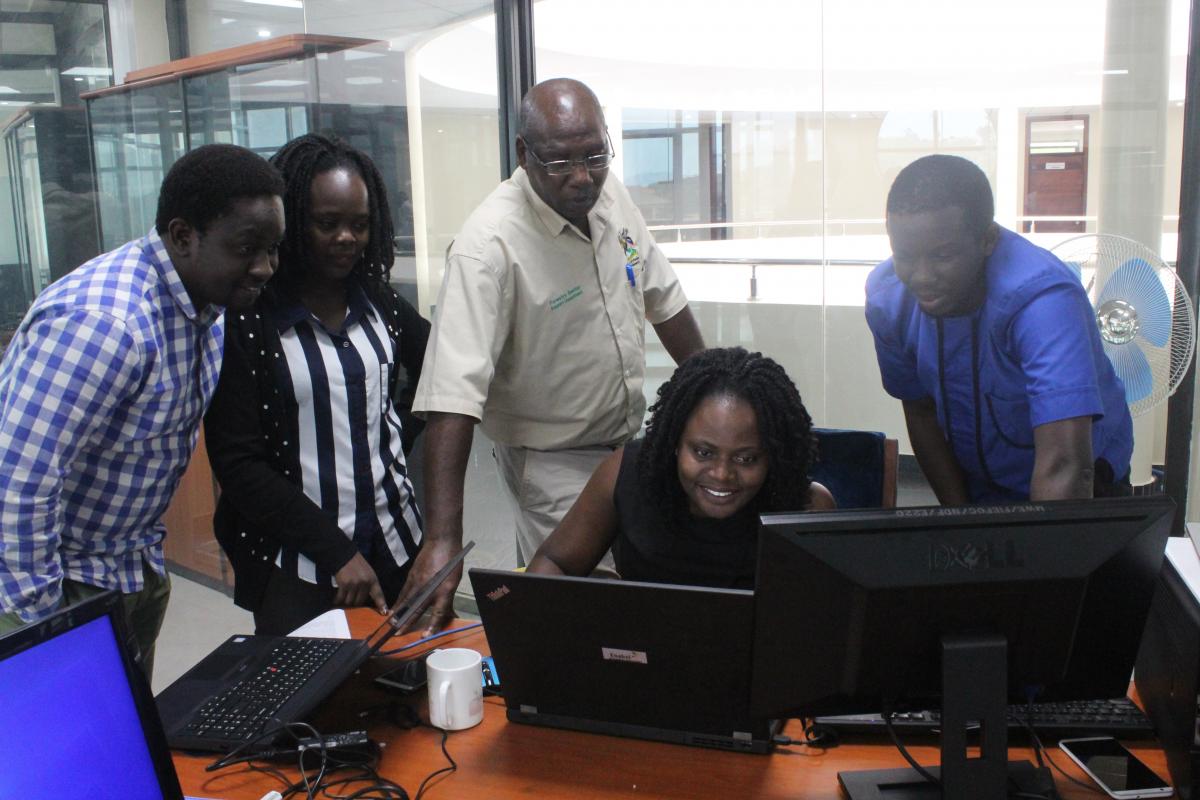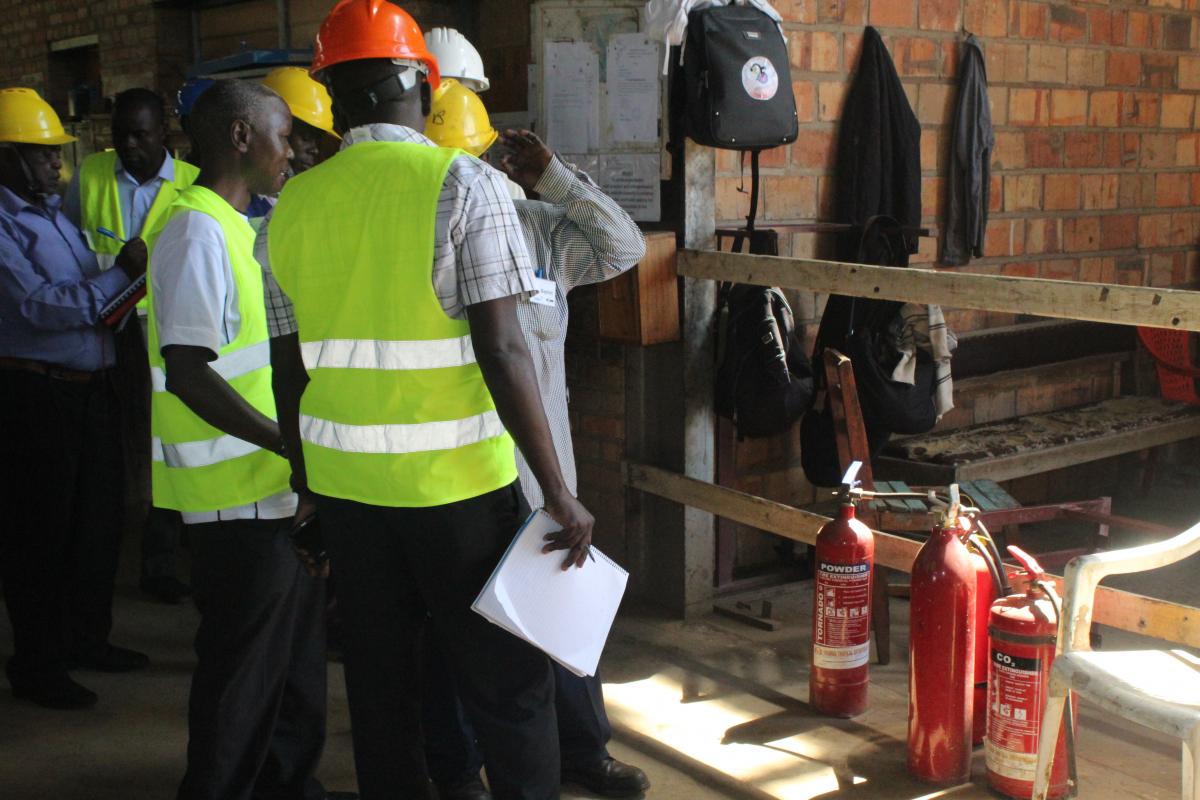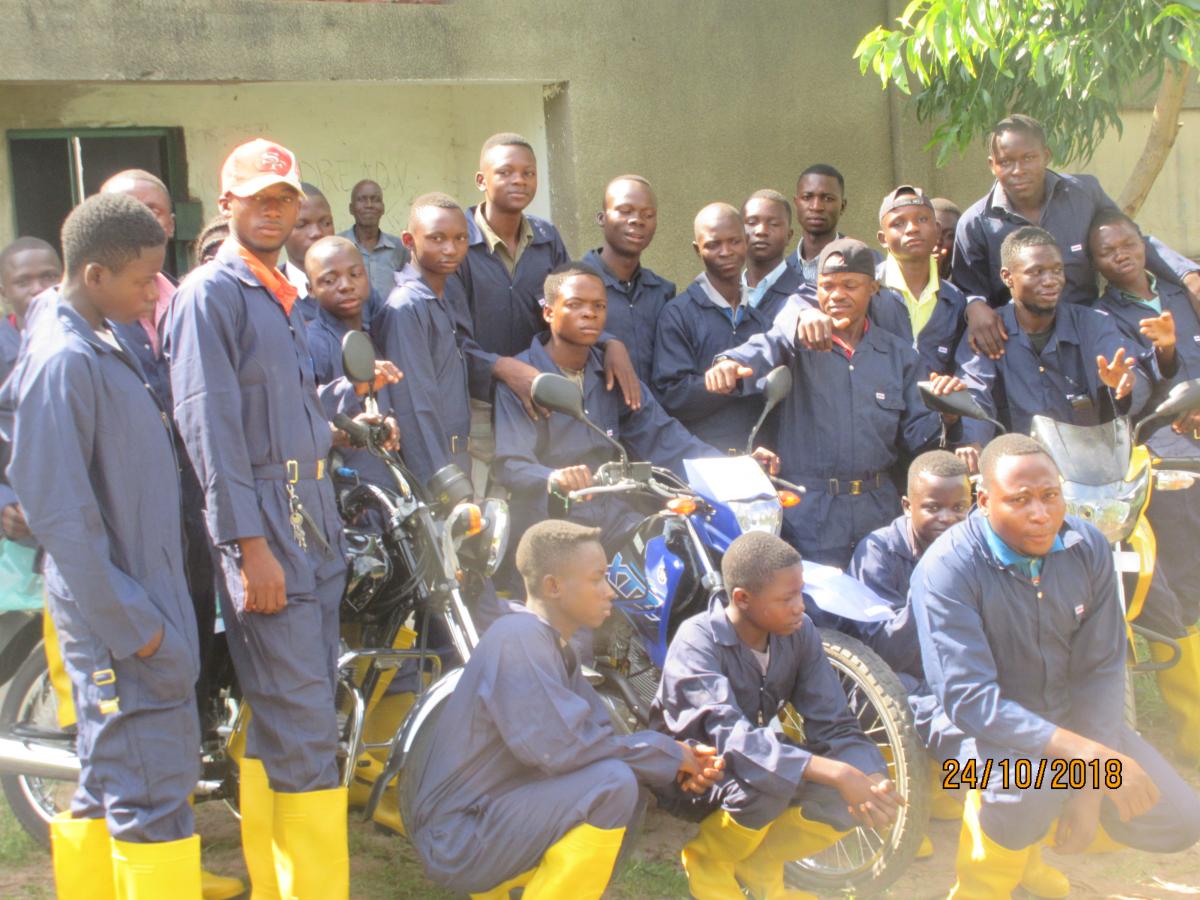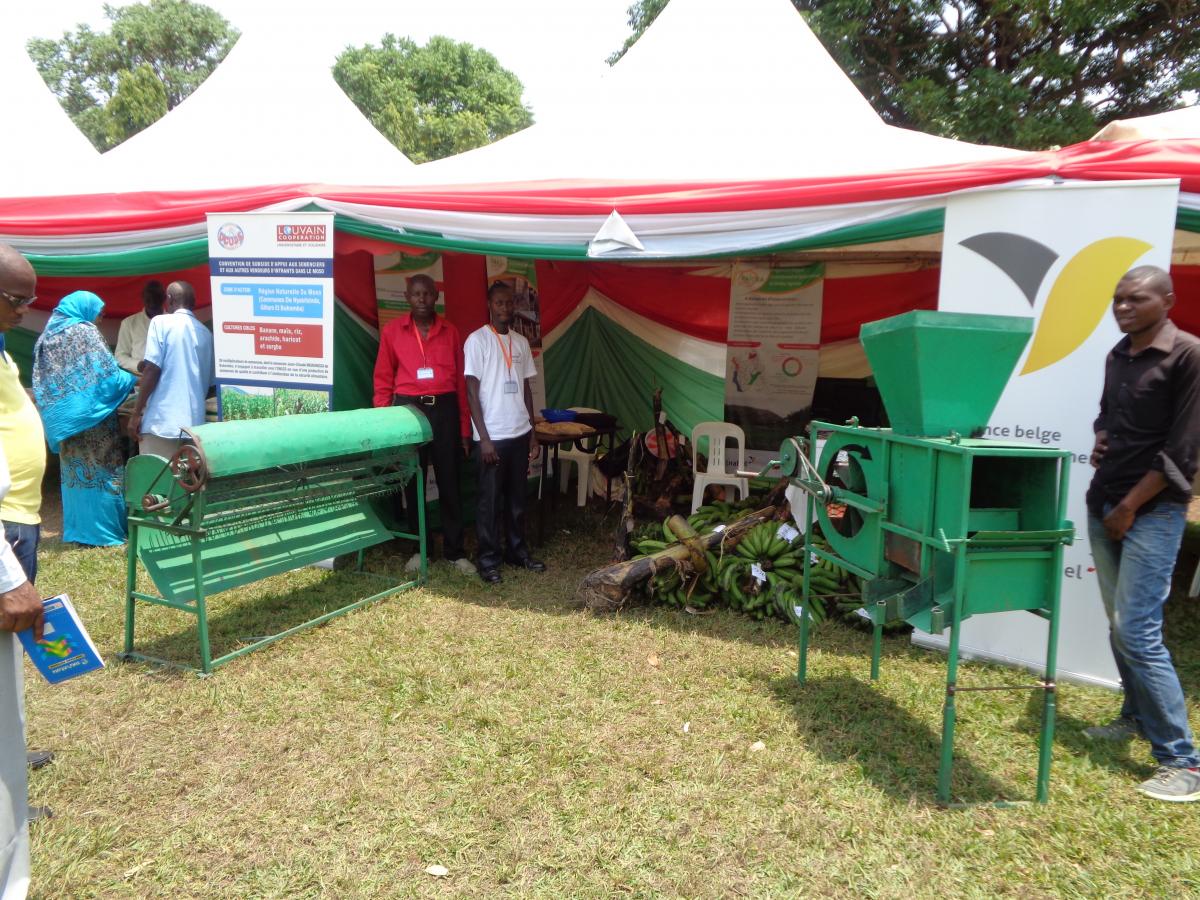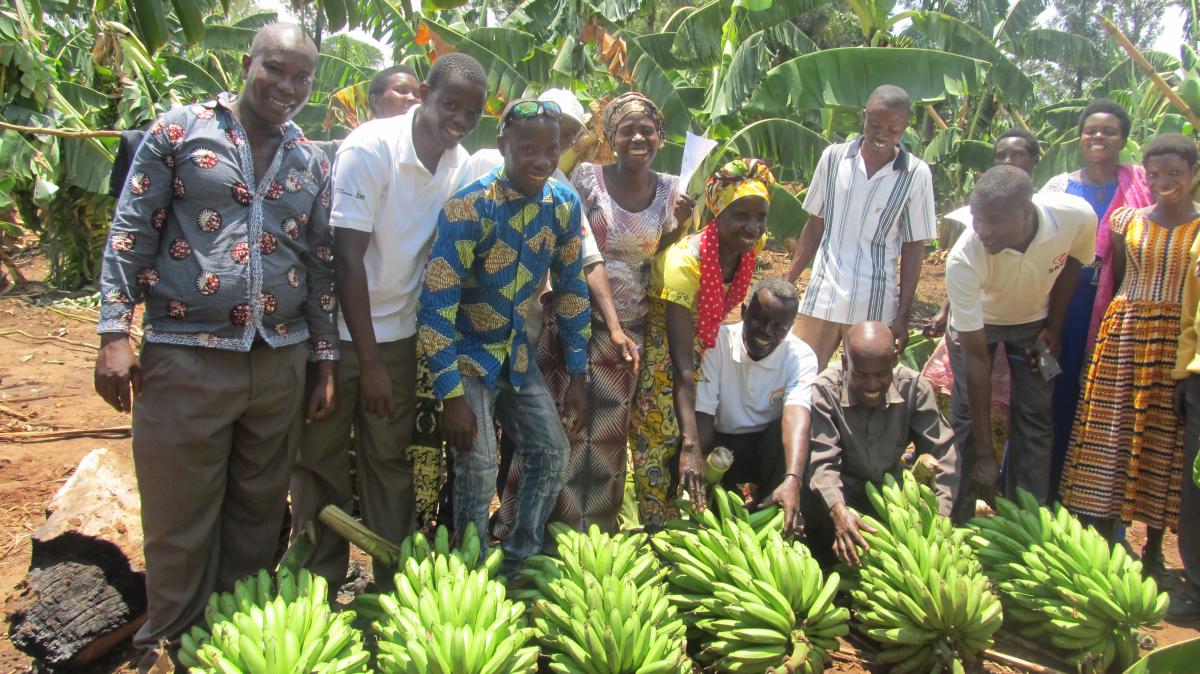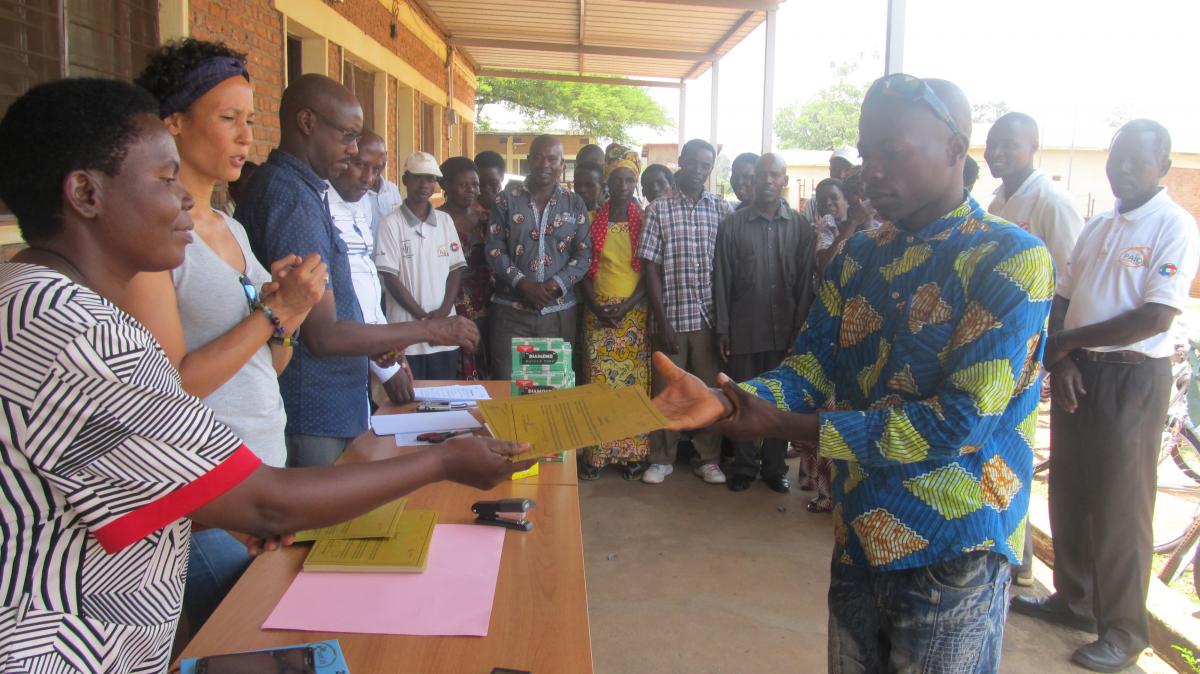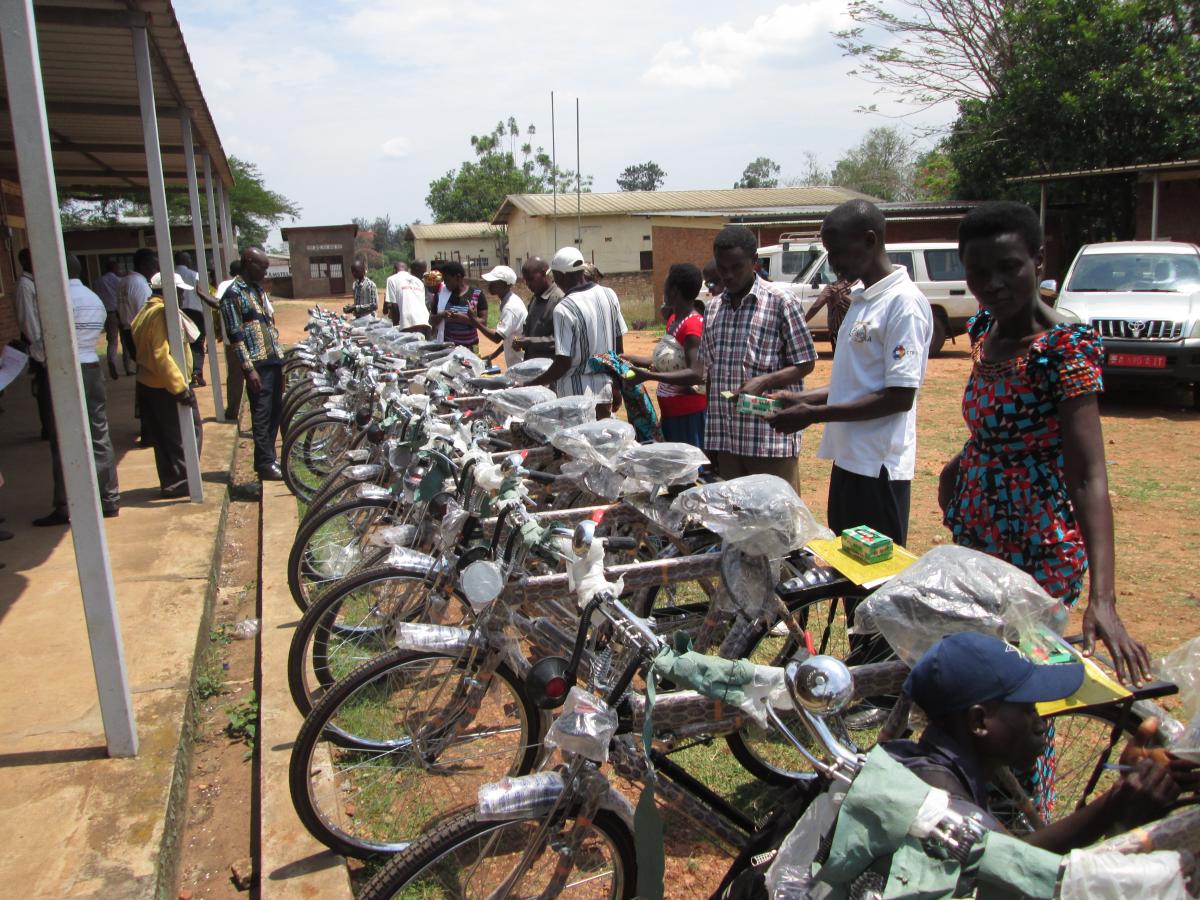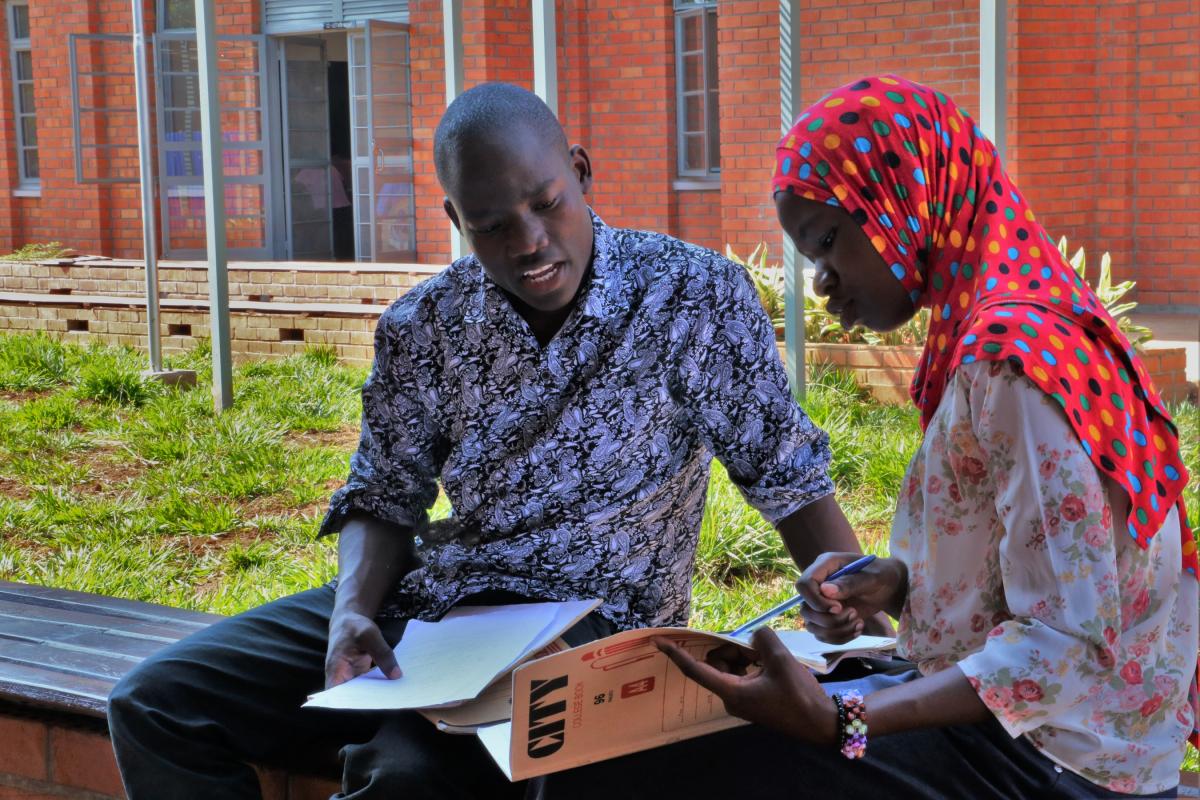Search
Viewing 2400 to 2415 of 3076 news
-
Apoyo a la política de Aseguramiento Universal en Salud
Guido COUCK | 15/11/2018
El Programa SISTEC tiene como objetivo contribuir a la mejora de servicios de salud de la población en situación de pobreza y pobreza extrema, en el marco de la política de Aseguramiento Universal en Salud. Resultado 1: Mejora de la gestión en salud, con la introducción de sistemas de monitoreo y evaluación de los servicios de salud y sus transferencias financieras.Resultado 2: Empoderamiento de derechos y deberes en salud estableciendo una cultura de aseguramiento, principalmente para las personas aseguradas al SIS. LOGROS Resultado 1Piloto de tarifario regional de procedimiento médicos y sanitarios para IPRESS construido y validado por la DIRESA Cajamarca y sus Redes de Salud, en alianza con Ministerio de Salud y Essalud. Esta herramienta junto con metodología puede ser aplicada en otras regiones para un intercambio prestacional efectivo y eficiente entre establecimientos de salud.10 IPRESS en Cajamarca y 11 IPRESS en Piura realizaron autoevaluación para la mejora de procesos de estándares esenciales de calidad en Instituciones Prestadoras de Servicios de Salud con internamiento.08 IPRESS en Cajamarca y 11 IPRESS en Piura implementaron su primer plan de mejora para reducir el tiempo de espera, gestión de la historia clínica, seguridad y calidad en la atención de los/las asegurados/as.Herramienta de Verificadores-Estándares de calidad para mejora de calidad de atención en los establecimientos de salud desarrollada y validada por Fundación Avedis Donabedian con SUSALUD, GORE y DIRESA en la región Cajamarca se encuentra disponible para su implementación a nivel nacional.Acompañamiento en elaboración de Análisis de la Situación de Salud (ASIS) de la Región Piura y Plan Participativo regional de Salud Cajamarca 2017- 2030, como información clave que permite mejorar la planificación de las acciones de la salud a nivel regional, teniendo en cuenta las necesidades de servicio de salud y características de la población asegurada.LOGROS Resultado 211 oficinas de atención al asegurado del SIS (OAA) implementadas en San Martín, Cajamarca, Piura, Junín y Huancavelica brindan información sobre el SIS, realizar afiliaciones y canalizar reclamos de la población asegurada.122,967 atenciones y 23,969 afiliaciones se han realizado en las 11 oficinas a nivel regional del 2016 al 2018, logrando la protección de la población asegurada y una cultura de aseguramiento. Antes del 2016 no existían ningún espacio que lograra velar por la protección de derechos y deberes en salud.567 educadoras y educadores en salud en San Martín, Cajamarca, Junín y Huancavelica han sido formados en el Programa de Formación de Formadores en Derechos y Deberes en Salud y Aseguramiento Universal en Salud, bajo un enfoque participativo de educación popular, en alianza entre SIS, SUSALUD, Programa Nacional PAIS, Programa Social Cuna Más y Diresa.Al 2019, se proyecta llegar a más de 84,579 personas en San Martín, Cajamarca, Junín y Huancavelica con información sobre derechos y deberes en salud, y aseguramiento universal en salud. A la fecha 6,838 personas cuenta con esta información.24 de los 45 Tambos en la región Huancavelica son puntos de digitación, donde brindar información para los procesos de afiliación. Existen 400 tambos a nivel nacional con conexión a internet, potenciales puntos de digitación para llegar a la población más vulnerable y aislada del país.837 personas (568 mujeres y 264 hombres) de San Martín, Cajamarca, Piura, Junín y Huancavelica de las Diresa, Unidades Ejecutoras, Microredes de salud y sociedad civil conocen cómo incorporar los enfoques de género e interculturalidad en sus procesos de atención. Se logró trabajar el 2018 en alianza con la Universidad Antonio Ruiz de Montoya.10,000 personas recibieron información sobre derechos y deberes en salud y aseguramiento universal a través de 143 intervenciones en espacios públicos tales como plazas públicas y dentro de los establecimientos de salud en Huancavelica, Junín y Piura.20,000 personas recibieron información sobre procesos de afiliación, protección de deberes y derechos en salud y cultura de aseguramiento, a través de 253 campañas, charlas de difusión, sesiones de informativas acerca del SIS en Cajamarca, Huancavelica, y Piura.
-
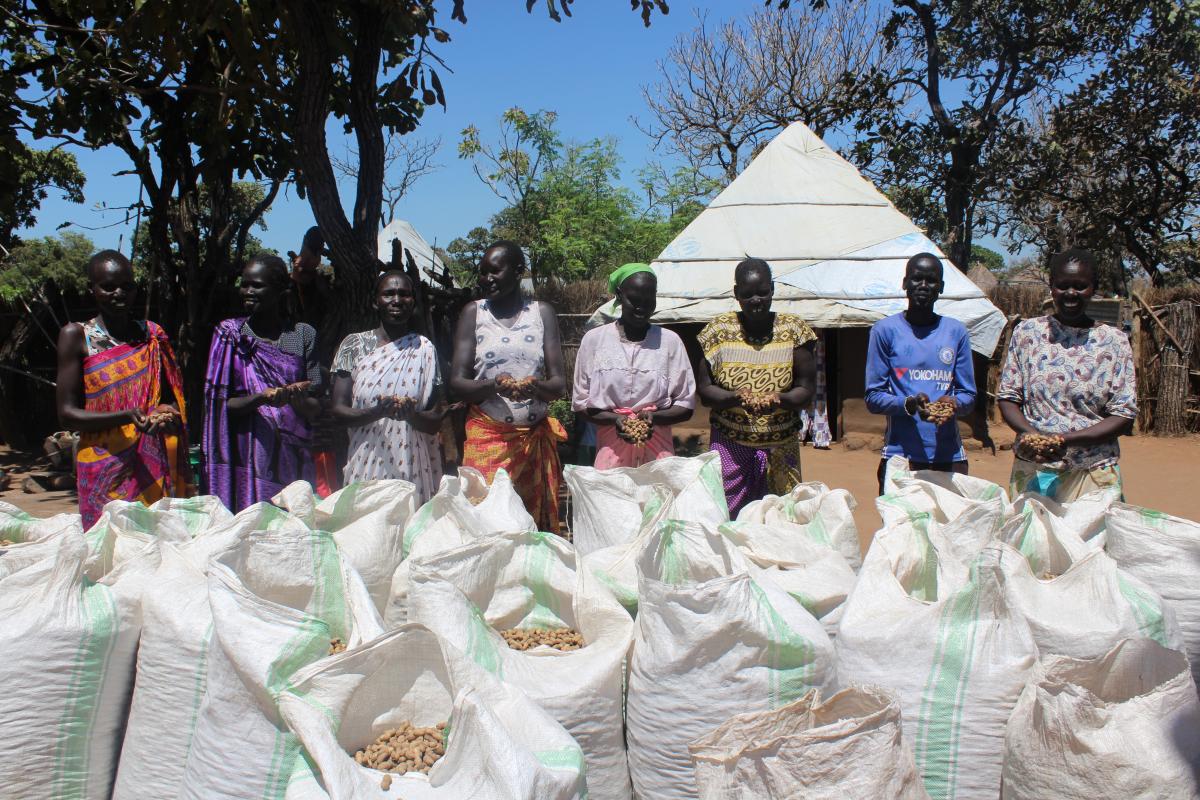
A fivefold harvest excites refugee farmers
Sylvia NABANOBA | 14/11/2018
A group of women and a man stack groundnuts into 27 white sisal sacks in the small compound. The groundnuts had been put out to dry – a necessary stage in the post-harvest handling process that will prevent them from being affected by mould while in storage. This is the home of Akiit Deng Garang, a South Sudanese refugee staying in Ayilo II refugee resettlement in Adjumani, Northern Uganda. A widowed mother of six, Garang fled her home in South Sudan in 2014 due to war and was resettled in Ayilo II. She is now the group leader of the farmers’ group that has harvested the 27 bags of groundnuts. The group, which goes by the Dinka name Domwokok, comprises 26 members, only two of whom are men. Most of the women are widows or living on their own in Uganda, their husbands having stayed behind in South Sudan. It partly explains why when the Danish Refugee Council mobilised the Ayilo II community to form farmers’ groups that they would work with on an agricultural programme, there was little hesitation in this community. “Working together in a group is good because it unites us,” says Garang. “More importantly, it enables us to work for our families’ welfare together. We support each other.” Under the European Union Emergency Trust Fund’s Support Programme for Refugee Settlements in Northern Uganda, the Danish Refugee Council operates a livelihood programme aimed at enabling refugees and Ugandans from the host communities to achieve home-based food security and income. The Danish Refugee Council does this through offering agricultural and financial literacy training to communities as well as farm inputs that include seeds, hoes and pangas. “After training us, Danish Refugee Council gave us five sacks of groundnuts which we planted on a five-acre piece of land,” says Garang. “We have now harvested 27 bags out of that, and we are very happy.” Each refugee in Uganda is offered a small plot of land for setting up a shelter and carrying out gardening. However, Domwokok group needed a large piece of land, and they were lucky to get offered five acres, free of charge, by a Ugandan landlord. To enable refugees get land for agriculture, the Danish Refugee Council reaches out to the local Ugandan community which owns most of the land in the area and requests landlords to free up some land on which the refugees can farm. Danish Refugee Council tries to make this acceptable by involving the local Ugandan population in its activities, something that helps to foster peaceful co-existence between the refugees and their hosts. So now that the harvest is in, what next for Domwokok group? “We will sell off 17 bags and keep the rest for re-planting,” says Garang. Having realised that groundnuts can withstand the largely dry weather in Adjumani, the group hopes to capitalise on that and expand production. Sticking to groundnuts may take away their worries about the weather, but may not solve some of the other challenges the group faced in the first season. “The soil here is mostly rocky – it is hard, dry and not fertile,” Garang explains. “It is also infested with termites which attack the crops.” Nevertheless, the group has a lot to look forward to. Groundnuts are marketable in the region, as they are one of the staple foods. A 100kg sack costs about UGX100,000 (USD28). In addition, it is hoped that the group will become a supplier of groundnut seeds to other farmers, as well as the Danish Refugee Council itself. Domwokok Group is confident that they have the financial skills to manage the proceeds from the sale of their current harvest as well as those that will come in the future. “We have received training in financial management, records keeping and saving,” chips in Nyanyok Dupel, a member of the group. The group actually has a financial arm, too, in the form of a village savings and loans association through which each group member saves some money per week. They have so far saved UGX3,590,000 (USD997), which members are free to borrow and return at a low interest. The Danish Refugee Council works with 244 such groups in Adjumani district, made up of both refugees and Ugandans. In Yumbe, another district hosting refugees, the organization works with 234 groups.
-
Forest Sector Support Department boosted by GIS training
Rachael AYEBALE | 13/11/2018
Ministry of Water and Environment (MoWE) Forest Sector Support Department (FSSD) department has a mandate to monitor all tree growing in the country. Tasked with this mandate, there was a big gap in the ability to have a representation of the tree growing coverage in the country. A needs assessment exercise was thus conducted at the department, and a course in Geographical Information Systems (GIS) was recommended for the department, to improve forest cover reporting for the department. This course instructs on how to capture, store, manipulate, analyze, manage, and present spatial or geographic data. It has been a saviour for the department. Most staff did not know what GIS is and how it can be used to improve reporting. Now they all understand the GIS component and appreciate how it eases their work in reporting forest coverage developments in Uganda. “Most of the time when we went to the field, we just came back with word reports without any physical evidence to back it up,” Irene Nanyondo, a forestry officer with the Ministry of water and environment mentions. “After this training, we now endeavor to carry GPS equipment and report using maps,” she adds. This implies that the department is now closer to where they envision it. A one stop center for all forestry coverage needs. The department has also now set up a GIS unit that is fully functional although faced with a few challenges such as lack of up to date equipment. Charles Byaruhanga, the principal Forestry officer intimates,” there is a big change in our work after this training. Now we can use this knowledge to collect data and report on the data.” Joseph Agaba, the FSSD department Economist and also training beneficiary, is very appreciative of the training they received. He feels the training was very essential for them by nature of the work they do in forestry cover reporting. “We were unable to produce maps to report on our work. But now we can easily produce maps, based on GPS points which has greatly improved our reports quality,” Joseph mentions. Recently after the Bududa landslide saga, the department was requested to provide aerial imagery of the area which they were able to provide. The local government after noting the very vivid reports provided by the department, requested the department to source for a trainer to also train them in geographical information systems. ‘’We are really very great full to the SDHR project that ensured we got this training.’’ And for all the trainings they have offered us, we appreciate. Adds Charles. ‘The trainer that trained us in GIS was very knowledgeable and we commend Enabel for sourcing the best trainers to train us,’’ Joseph concludes.
-
Health and safety now a priority for St Josephs VTI work spaces
Rachael AYEBALE | 08/11/2018
St Joseph’s Vocational Training Institute was once in an appalling security situation. The institute no formalized occupational health and safety management plans. There were no emergency exits in their workshops, they had no protective gear such as helmets, overalls, steel cap boots and so on. The institute had multiple entry points and thus anyone could get in and out of the institute without notice. The cooking areas were in dire state, food handling was inefficient, there were no emergency kits such as fire extinguishers and first aid boxes, waste management was lacking, sanitation facilities were lacking and so on. Following the analysis exercise of the organizational environment in occupational health and safety at the institute, a course in Occupational Health and safety among other interventions was recommended. OHS training participants tour the institute workshop to identify health and safety risks This course focuses on the social, mental and physical well-being of workers in all occupations raising awareness on unhealthy or unsafe working conditions thus aiming at decreasing work-related accidents and diseases. “The risks have so far been cut to over half,” As Geoffrey Oromcam the course trainer confirms after a tour of the institute workshops. There is now only one entry point to the institute with a fence built around the institute and only one open gate. Workshop lay out has improved at the institute. There are signs on safety in place in the workshops, garbage disposal has greatly improved with colored bins put in place, and emergency exits have been put in place in workshops among other changes. Tumusiime Edward Moses a participant in the training says, “I have at least changed how I was operating. I didn’t have any fire protection equipment, but now I do, although using manual methods such as sand.’’ “I have also trained my staff on how best to act in case of an emergency.’’ He adds. Muhangi Peter, who works as an instructor in the mechanical department adds onto Edwards testimony that he has learnt how to use PPEs (personal protection equipment), and to identify hazards in the workshop. He also agrees that there are numerous safety hazards in their workshops but now that they can identify them, the problem is half way solved. Magezi Francis, an instructor in Mechanical engineering at the institute also has a lot to say about the training. He has learnt how best to use PPEs. To himself and his students, personal safety comes first. Musinguzi Solomon proudly talks about how this training has improved on his work. “This training has helped me a lot. If you visit my workshop now, you will find it very organized,’’ he adds. However, to some beneficiaries of the training, change is yet to come. “If you visited my workshop now, it is in a mess, but after this training today, I am going to sit down and put it in order in as far as safety is concerned,” says Ben Mulogwa an MCP at the institute. On a whole, the knowledge has been passed on to the training participants. Despite the challenges the participants are faced with, they are optimistic and will do whatever they can to ensure they improve safety in the workshops to reduces health risks to them and their students.
-
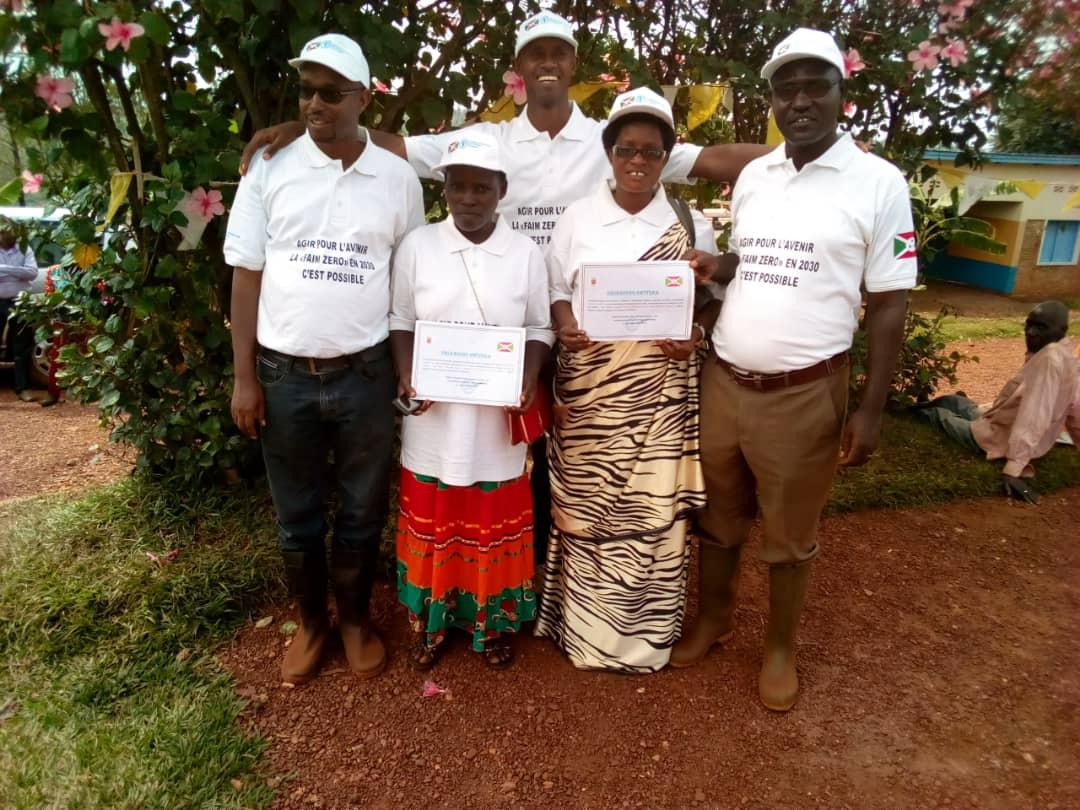
Enabel > PAIOSA : recompensé à la Journée Mondiale de l’Alimentation à Bwambarangwe (Province Kirundo)
Pascale LEPOINT | 07/11/2018
Participation d’Enabel Burundi à la Journée Mondiale de l’Alimentation du 16 Octobre 2018 à Bwambarangwe (Province Kirundo) avec, parmi les 4 meilleurs producteurs primés par le Ministre Dr. D-G. Rurema de l’Environnement de l'Agriculture et de l’Elevage, 2 facilitateurs CEP encadrés par PAIOSA / Enabel Burundi dans le cadre des Champs Ecoles PaysansLégende: Claudine NIZIGIYIMANA et Alphonsine MUKAREMERA les 2 facilitatrices maïs primées, entourées, de gauche à droite, par Ernest CISHAHAYO agent CEP Antenne PAIOSA/Bugesera, Bernard BIZOZA, Chef d’Antenne PAIOSA/Bugesera et Herménégilde MANYANGE, Point Focal MINEAGRIE/PAIOSA
-
PARCOURS D’INTEGRATION SOCIO PROFESSIONNELLE VISANT L’EMPLOI
Michael MALEMBA | 06/11/2018
Le programme vient d’impulser depuis septembre de cette année au centre d’application de DON BOSCO la filière de Mécanique moto pour des jeunes en rupture familiale et scolaire issus des communautés. Pour ces jeunes non diplômés, sans formation et sans emploi, cette opportunité constitue une aubaine pour se reconstruire et connaître un futur plus prometteur.Le programme appuie cette filière via le renforcement des capacités du personnel, la construction d’un nouvel atelier, la dotation en équipements et outillage, en vêtements de travail/sécurité, des motos neuves et usagées pour créer les conditions réelles d’un atelier de mécanique : ce qui permettra aux jeunes d’acquérir les compétences techniques, les gestes et attitudes propres au métier de mécanicien moto. 26 jeunes vont bénéficier d’un parcours d’intégration socio professionnelle encadré par des formateurs artisans durant 9 mois à raisons de 30 heures par semaine ; répartis en 20H de pratique réelle du métier en atelier et 10 H de cours généraux (maths simples, français, entrepreneuriat, code de la route). Le Centre d’application Don Bosco est appuyé par le programme, pour cette filière dans le non formel, unique dans le Kasaï Oriental. Ce qui permettra à ces 26 jeunes bénéficiaires apprenants d’acquérir les compétences métier nécessaires à l’exercice de la profession. Un accompagnement à l’auto-emploi sera mis en place à la fin de leur parcours d’intégration avec pour objectif unique de les aider à créer leur propre emploi. Les jeunes apprenants seront accompagnés par l’U.F.E. (Unité Formation Emploi) adossée à l’établissement afin de faciliter leur insertion professionnelle. Le programme dotera chaque jeune d’un « KIT d’installation » lui permettant d’être rapidement actif à l’issue de leur apprentissage au bénéfice des clients usagers des deux roues dans la ville de Mbuji-Mayi.
-
Champs Ecoles Paysans
Pascale LEPOINT | 30/10/2018
Participation de producteurs à la Foire Nationale Agricole organisée du 04 au 07 septembre 2018 à Bujumbura avec l’appui de Enabel / PAIOSA
-
Champs Ecoles Paysans
Pascale LEPOINT | 30/10/2018
Facilitateurs CEP banane Imbo de 2ème génération à l’origine d’une association pour la promotion et la commercialisation de la culture de la banane « MFURAZABARIMYI » (agriculteurs modèles)
-
Champs Ecoles Paysans
Pascale LEPOINT | 30/10/2018
Cérémonie de remise de certificats aux facilitateurs CEP Banane de 2ème génération (F2) de l'Imbo
-
Enabel > PAIOSA : un partenaire pour l’agriculture familiale burundaise
Pascale LEPOINT | 30/10/2018
Enabel (Agence belge de développement) Burundi, à travers son Programme d’Appui Institutionnel et Opérationnel au Secteur Agricole (PAIOSA), a organisé le vendredi 12 octobre 2018 à Cibitoke, la cérémonie de clôture de la formation de facilitateurs CEP banane de 2ème génération. Par la même occasion, le PAIOSA a procédé à la remise des certificats aux 25 lauréats (11 femmes et 14 hommes) de cette formation. L’approche CEP est une approche de formation non-formelle des adultes, utilisée comme méthode de vulgarisation agricole participative. Les facilitateurs certifiés sont à l’origine d’une association qui ne cesse d’innover dans la filière banane.Remise des certificats à l’endroit de 25 facilitateurs de l’approche Champ Ecole Paysan (CEP) à CibitokeAfin de réduire les problèmes liés à l’insécurité alimentaire et nutritionnelle au Burundi, l’approche CEP est vulgarisée depuis 2014 par le PAIOSA, dans ses 3 régions d’intervention : l’Imbo, le Moso et le Bugesera.A travers les CEP, le PAIOSA vise le renforcement des capacités des petits producteurs à mieux appréhender et comprendre les contraintes rencontrées et prendre des décisions techniques avisées pouvant améliorer leur système de production. Les CEP contribuent en outre à l’amélioration de la disponibilité alimentaire par l’augmentation des rendements et des productions locales orientées dans les filières porteuses. C’est ainsi que 25 producteurs (facilitateurs) ont suivi une formation qui a duré 1 an et 5 mois, période correspondant au cycle cultural de la banane. Ces derniers ont pu acquérir et développer de nouvelles connaissances sur cette culture. En plus des certificats décernés, les lauréats ont reçu chacun un vélo comme outil de travail pour la vulgarisation.Une appréciation de la Directrice du BPEAE qui a suivi de près le déroulement de la formation des facilitateursDans son discours lors de la cérémonie de certification, Mme Béatrice NYABENDA, directrice du BPEAE (Bureau Provincial de l’Environnement, de l’Agriculture et de l’Elevage) Cibitoke, n’a pas manqué de souligner : « L’insécurité alimentaire est un défi majeur auquel le Gouvernement burundais fait face à l’échelle nationale mais aussi une préoccupation importante pour la province de Cibitoke. Elle a en outre ajouté :« L’approche CEP utilisée par Enabel / PAIOSA dans les bananeraies de la province de Cibitoke (traduction littérale « terre des bananes ») contribue sans nul doute à retrouver leur essor d’antan ».Par ailleurs, la Directrice du BPEAE Cibitoke a félicité les 25 lauréats de cette formation pour le travail accompli et les a encouragés à former d’autres groupements, comme ils ont déjà commencé à le faire, afin de transmettre les connaissances acquises à leurs compatriotes pour un meilleur rendement sur la culture de la banane tout en améliorant leur niveau de vie.Les facilitateurs de 2ème génération à l’origine d’une association pour la promotion et la commercialisation de la culture de la bananeL’idée de s’associer est rapidement née parmi les facilitateurs, comme le précise Albert NDIKUMANA, Président de cette association : « Notre association « MFURAZABARIMYI » (Agriculteurs modèles) a été créée au début de l’année 2018, au moment où on suivait les formations CEP. Nous avons ainsi loué ensemble un terrain de 3 ha que nous avons prévu d’exploiter pendant 4 ans. Nous y avons planté 3.000 rejets de bananiers sains issus de champs certifiés indemnes du virus du Bunchy top (BBTV) et du flétrissement bactérien (BXW), et les récoltes s’annoncent satisfaisantes ».L’exploitation du terrain a permis aux membres de cette association de générer des revenus supplémentaires comme le témoigne Gérard BURIKUKIYE, trésorier de cette association : « Quand les plants étaient encore jeunes, nous avons cultivé du maïs, du soja puis des arachides en culture intercalaire. Une partie de la production a été distribuée aux membres de l’association tandis que l’autre a été vendue afin de constituer un fond de roulement pour l’exploitation du terrain ».Une exploitation modèle certifiée par l’Office National de Contrôle et de Certification des Semences (ONCCS)En août 2018, l’association MFURAZABARIMYI a sollicité et obtenu des services de l’ONCCS la certification « BBTV / BXW - free » de leur champ collectif de bananiers.L’association espère tirer profit de cette certification en vendant des rejets de qualité auprès des agriculteurs de la région et des organisations œuvrant dans le domaine de l’agriculture.Dans le but également de trouver un marché d’écoulement de leurs productions, cette association a participé avec l’appui de Enabel / PAIOSA à la Foire Nationale Agricole organisée du 04 au 07 septembre 2018 à Bujumbura. « La participation à la Foire Nationale Agricole du Burundi nous a permis de nouer des contacts avec d’autres acteurs de la filière banane, notamment des producteurs, transformateurs et commerçants. A titre d’exemple, nous avons conclu un contrat de vente avec un particulier qui s’est engagé à nous acheter 50 régimes de banane par semaine », se réjouit Gérard qui représentait l’association lors de la Foire Nationale Agricole.L’engagement de la Belgique dans le secteur agricole au BurundiAu total, plus de 58 millions d’euros sont investis sur financement du Royaume de Belgique dans le secteur agricole burundais par Enabel à travers le PAIOSA. Ce financement est alloué pour appuyer différentes interventions à savoir : Micro-projets et Projets d’Entrepreneuriat Agricole ;Infrastructures hydro-agricoles ;Accompagnement d’associations paysannes afin de les aider à assurer efficacement leur rôle dans le développement rural (Organisations de Producteurs et Associations d’Usagers de l’Eau) ;Systèmes de productions agricoles (Champs Ecoles Paysans, Exploitations Familiales Intégrées et Intrants de qualité).Depuis 2014, Enabel / PAIOSA, à travers l’approche CEP, a déjà formé 411 facilitateurs-producteurs sur les filières banane, riz et maïs dans les 3 régions d’intervention. Ces facilitateurs ont à leur tour mis en place plus de 1.000 groupements touchant plus de 28.000 producteurs burundais.Liens OpenEnabelPAIOSAhttps://open.enabel.be/en/BDI/2086/p/programme-d-appui-institutionnel-et-oprationnel-au-secteur-agricole-paiosa-amlioration-de-la-comptitivit-du-secteur-agricole.htmlBilan de l’approche Champs Ecoles Paysans PAIOSAhttps://open.enabel.be/en/BDI/2086/653/u/bilan-de-l-approche-champs-ecoles-paysans.htmlLes champs écoles paysans PAIOSA (1)https://open.enabel.be/en/BDI/2086/197/u/les-champs-cole-paysans.htmlLes champs écoles paysans PAIOSA (2)https://open.enabel.be/en/BDI/2086/193/u/les-champs-ecole-paysans.html
-
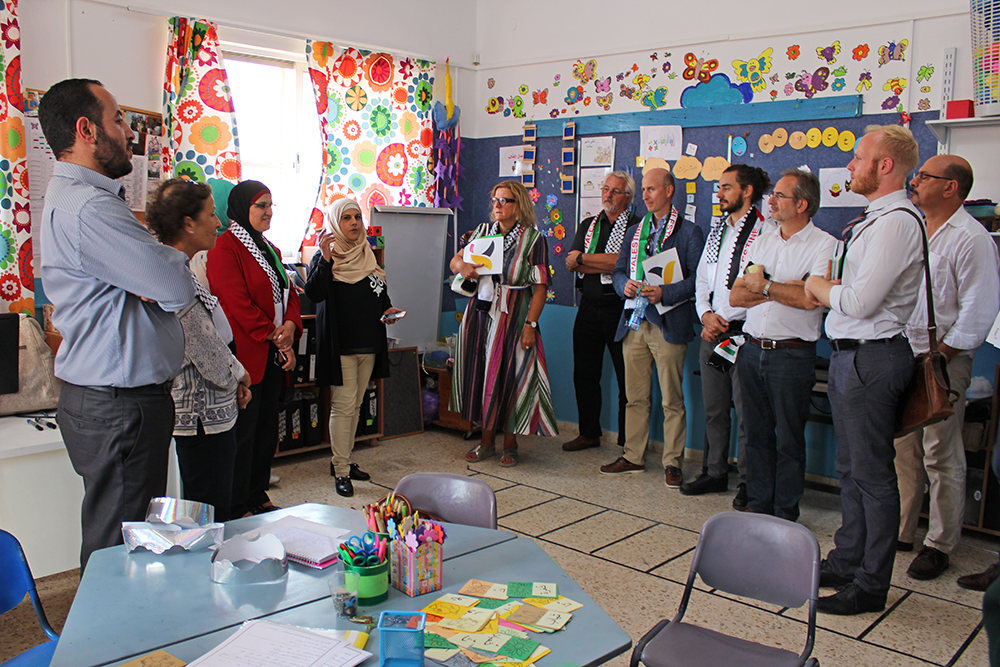
European Union Heads of Cooperation visit East Jerusalem Schools
Laura SCHILLEMANS | 25/10/2018
European Union Heads of Cooperation in Jerusalem and Ramallah visited a number of Palestinian schools in East Jerusalem. The delegation was briefed on the educational situation and the challenges facing Palestinian students and schools. Heads of Cooperation visited two schools in East Jerusalem: Al Rawda Al Haditha in Zaayem and Sheikh Sa'ad Boys School. At Al Rawda Al Haditha in Zaayem, the school administration briefed the delegation on the challenges facing them in their daily work. The principal and the teachers highlighted the achievements of the students who were able to overcome the obstacles and demonstrate strong educational performance. The students' parliament presented the concerns and aspirations of the students. The Belgian Development Agency, Enabel, then presented the work to be done in the context of the future cooperation between the EU and Enabel under ''the resilience in schools in East Jerusalem'' project. The delegation then met the Head of Zaayem Community Council who briefed them about the community that is facing many risks due to the Israeli measures. The group visited later Sheikh Sa'd Boys School where they met with representatives of the local community and school administration. The NGO Terres des Hommes briefed the group on the challenges facing the education system in East Jerusalem and the ongoing efforts to counter the negative consequences on the students' well-being and academic performance.More information: https://eeas.europa.eu/delegations/palestine-occupied-palestinian-territory-west-bank-and-gaza-strip...
-
Enabel Makes Remarkable Strides in Improving Teacher Education
Dorothy KYAMAZIMA | 23/10/2018
Through the Teacher Training Education (TTE) project, Enabel has made tremendous achievements to the education sector. The project has One common goal which is to Improve Secondary Teachers Education in the National Teachers’ Colleges. The TTE Project as per the framework of the Ugandan-Belgian Governmental Cooperation is jointly implemented by Ministry of Education and sports (TIET department) and Enabel (Belgian development agency). The project started its second Phase in 2017 and it will go through 2021. The beneficiaries of the project include: 5 National Teachers’ Colleges (Kabale, Kaliro, Mubende, Muni and Unyama), TIET department, Construction Management Unit, Procurement Disposal Unit and partner secondary schools surrounding the NTCs (3 per NTC). The project has 3 components: The Institutional development component that strengthens the colleges and the Ministry of Education and Sports Management systems. Within this component support is provided to the colleges to develop their planning, finance, human resource and students’ follow-up. Similarly, support is also given to the Ministry of Education and Sports to improve management of the Teacher/Instructor, Education and Training department. Among the achievements in this component are: · A supervision and monitoring system has been put in place to support the 5 NTCs and TIET department. This system has harmonized the NTC work plans and monitored results at college level (committees, NTC management) and national level through the quarterly performance reviews. · The project has strengthened the capacity needs for NTCs through capacity development, ICT management and maintenance and creating safe learning environments. Within this area, the project has prepared capacity development workshops for IT managers in colleges known as the IT days, procured equipment to improve teaching such as laptops, computers, cameras, projectors etc. and provided open-source software for the NTCs. · In order to improve academic management, the project installed a management information system known as ‘Smart Campus’ within NTC Muni and Kaliro and supported support supervision in the colleges through the implementation and dissemination of the Support Supervision guidelines and training of mentors. · To improve human resource management, the project has development and implemented a pilot system of time on task, implemented and disseminated Continuous Professional development guidelines that are aimed at advancing the skills and knowledge of teaching staff. · The project has also set in place a maintenance mechanism to improve the maintenance capacity of the NTCs. Two national workshops were held to this effect and there is on-going procurement for equipment such as energy saving kitchens, solar panels, water harvesting among others that will reduce the operational costs of NTCs. · Similarly, support has been provided to the TIET department through data entry in the teacher registry process, partitioning of the office space, provision of IT equipment and organising teacher education working group meetings. · In order to strengthen the Construction Management Unit (CMU) and Procurement Disposal Unit (PDU), the project is providing IT equipment, site report managing software and a shelving and archiving room for PDU. While institutional management is an important area of support to improve the quality education, the project also extends its support to the area of pedagogy; which is the method and practice of teaching. Through the pedagogy component, the project has achieved the following: · It has strengthened the professional competencies of the NTC academic staff in revision of the general methods course (syllabus for professional studies, data analysis for the use of ICT in colleges), andragogy training process (training of mentors with support from national experts) and participation in different conferences such as the Deta conference held in Rwanda in August 2017, E-learning conference in September 2017 held in Mauritius on ICT4Education and the Aga Khan University conference on Teacher education in October 2017. · The project has facilitated access to information and quality pedagogical content by creating user-friendly libraries. Libraries have been stocked with updated book collections, installation of the Koha library management system in all 5 NTCs, procurement of library kit (photocopiers, binding machines, laminating and papercutting machines), development of a librarian competency profile and membership subscription to the Uganda Library Information Association (ULIA). · Developed and institutionalised a pilot system of Continuous School Practice that is geared towards providing opportunities for teacher trainees to gain experience and teaching skills in surrounding partner secondary schools. To this effect, a Guide and Toolbox for implementation have been drafted and disseminated along with motorbikes to enable teachers to overcome their transport constraints. · The project has created a network of partner secondary schools for school practice and strengthened their pedagogical capacities through creating official collaborations with 17 partner secondary schools, training them on Active Teaching and Learning (ATL), providing them with a start-up kit that includes pedagogical materials and a computer and organising gender missions geared towards creating a safe learning environment and eradicating gender based violence in schools. Providing institutional and pedagogical support is one way to improve the quality of secondary education. In order to take a step further, the project has made a substantial investment in infrastructure with the purpose of creating a conducive learning environment. Through the infrastructure component, the project has rehabilitated, expanded and equipped college facilities. Among the achievements are: · Finalising the design process to improve the pedagogy facilities (laboratories, classrooms and libraries) for NTC Mubende and Kabale and the accommodation facilities for staff and students in Muni and Kaliro. The architectural designs and infrastructural set-up take into account several important factors that focus on innovation, sustainability, energy efficiency and the natural environment. Classrooms benefit from sufficient natural daylight and a well-designed cross ventilation sets off the higher tropical temperatures without any artificial intervention. · Conducting Safe Learning Environment (SLE) walks in colleges in order to identify and address specific security needs such as provision of separate washrooms for female and male students, setting up security lights within the compounds among others.
-
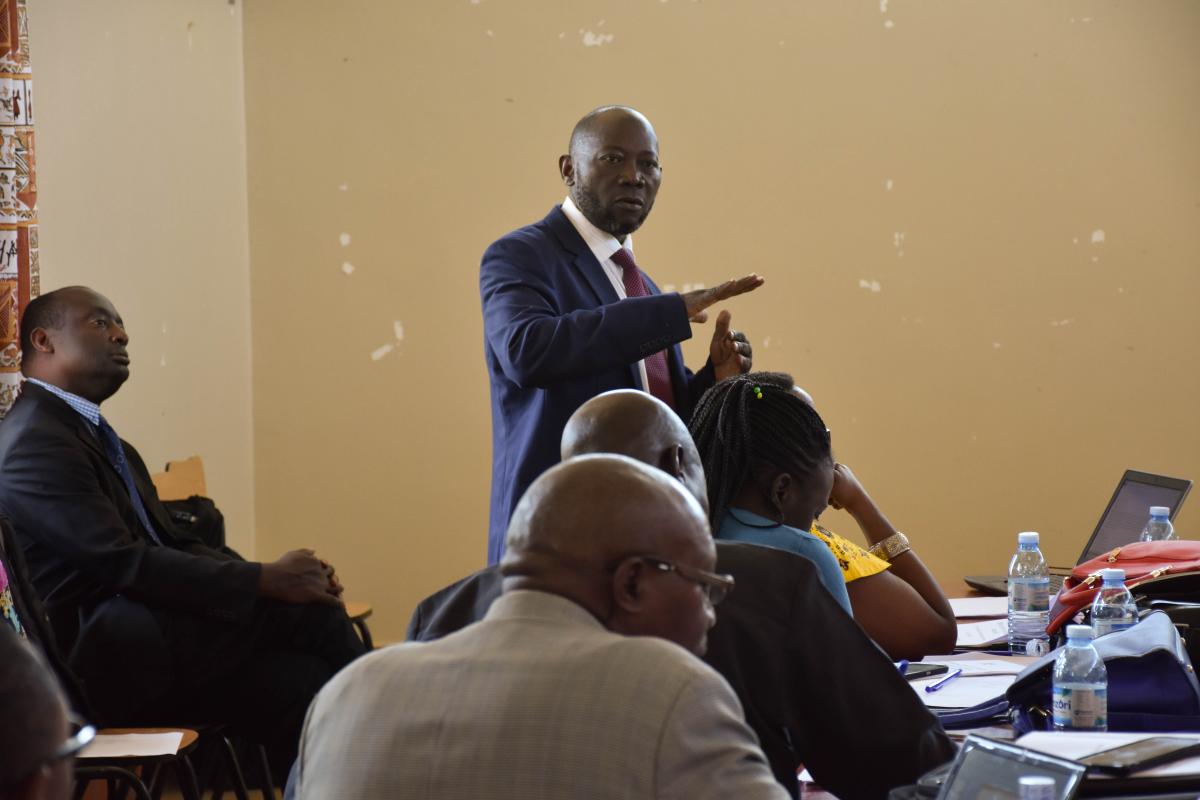
Improving the Performance of National Teachers' Colleges
Dorothy KYAMAZIMA | 23/10/2018
National Teachers’ Colleges (NTCs) in Uganda work with one common goal; to train and produce the best teachers in Uganda. Positioned across the country in Muni, Unyama, Kaliro, Mubende and Kabale; these colleges attract a large number of students hoping to join the teaching profession and become competent teachers within country. With the support from TIET department of the Ministry of Education and Sports and the Teacher Training Education (TTE) project by Enabel, the NTCs have been able to actualize a number of goals and make tremendous achievements towards their improving their own systems and capabilities. This has mainly been realised through the quarterly performance review meetings. The 4th Quarterly Review Meeting After each quarter of implementation, a national monitoring meeting is held on a rotational basis at one of the NTCs and this meeting hosts a vast number of stakeholders ranging from TIET education Commissioner, Education officers, NTC Principals, governing council members, guild student representatives, representatives from Kyambogo University Teacher Training department and Enabel staff. It is through the quarterly review meetings that all stakeholders that support the NTCs review the colleges performance in relation to the access to teacher training services for students across the country, the institution’s management capacities and ensure the best quality teacher training. This July, the NTCs held their 4th quarterly review meeting at NTC Kaliro and the assesment was done based on 3 major areas. Access; which is aimed at increasing access to teacher training, management; which enhances the NTC’s management capacities and finally quality; which enhances the quality of teacher training within the NTCs.The following were the achievements and recommendations realised during the meeting. · Generally, all colleges realised an increase in number of students enrolling and this was due to the different forms of advertising campaigns and communication done · The was an overall improvement in asset maintenance, this included the infrastructure maintenance, availability of electricity and water and implementation of behavioural change workshops on topics such as energy saving, waste management, gender based violence, safe learning environment issues, sexual reproductive health, legal policy frameworks among others. · In the area of management, the workshop identified the need to harmonize work-plans and budgets across colleges but also highlighted improvements in ICT, financial, human resource and academic management within the colleges. · In the area of quality, there were improvements and assessments in the use of Active Teaching and Learning (ATL) in pedagogical preparations, Support Supervision and Continuous School Practice.
-
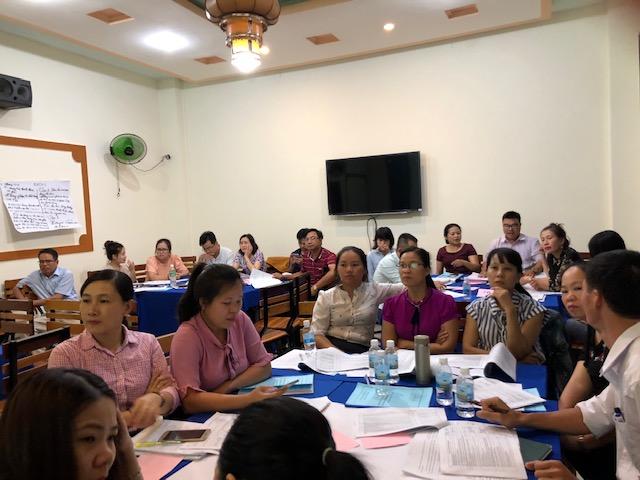
Public Administration Reform plan made bottom up
Marion FISCHER | 22/10/2018
On 18th and 19th October 2018, trainers for districts of Kon Tum province were trained on developing the public administration reform (PAR) plan for 2018. The plans will be developed beginning at the commune level, drawing the approach.mastered through change management tasks from the previous results in implementation of the socio-economic development plan. PAR plans thus will emerge from the real needs of the people in the communes, than be integrated into a planning document at district level and become part of the overall provincial PAR plan. The trained participants learned to apply this logic in the communes. The process is guided by the theory of change.
-
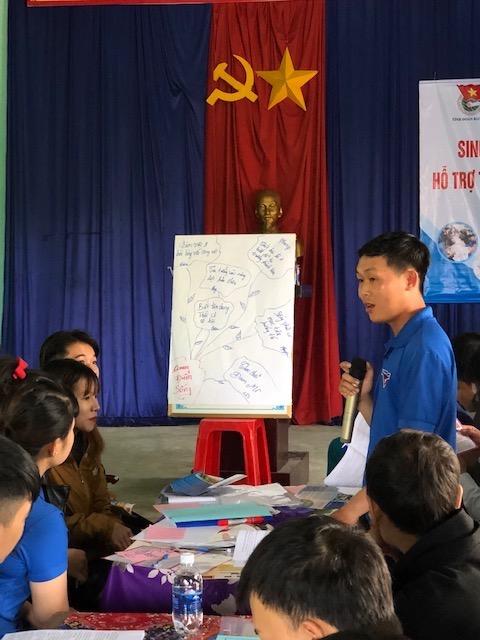
Kon Tum Youth Union reaching out into communes
Marion FISCHER | 22/10/2018
The Kon Tum Youth Union groups hold trainings for multipliers on support to employment orientation and job application. The process is a joint effort of the Youth Union with the provincial Employment Agency. On 19th October 2018, a training of youth group leaders was held in Tran Hung Dao commune. It focused on personal orientation in life and on the values and personal development goals of young people. The trained participants received a training manual on support to young people, who wish to apply for jobs or to engage in a business start-up. Information folders designed together with the Employment Agency, were distributed for reference on job opportunities and contact lines for applications.
